Taiwan Semiconductor Manufacturing Co (TSMC, 台積電) yesterday announced plans to build a new plant in Japan next year to produce 22-nanometer and 28-nanometer chips in its latest effort to expand its global manufacturing footprint.
The Japanese fab is to start operations in 2024, the world’s biggest contract chipmaker said, ending months of speculation.
“We have received strong commitment to supporting this project from our customers and the Japanese government,” TSMC chief executive officer C.C. Wei (魏哲家) told a quarterly investors’ conference.
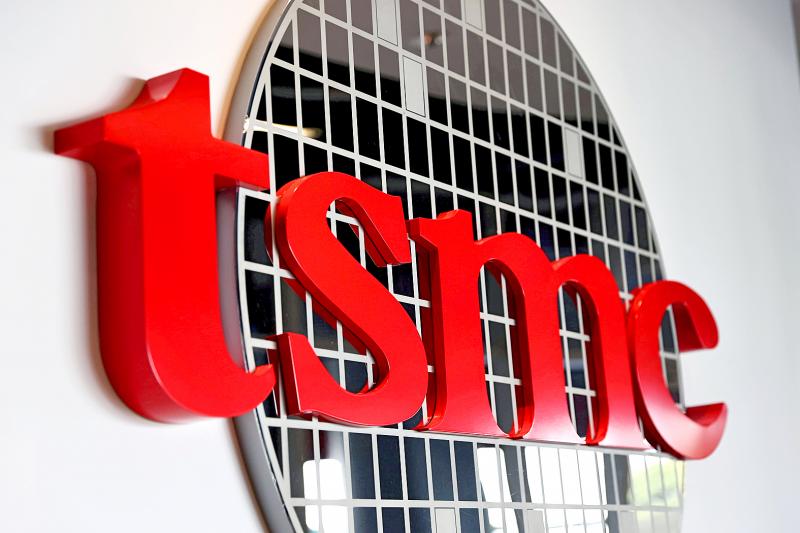
Photo: Ann Wang, Reuters
“We believe the expansion of our global manufacturing footprint will enable us to better serve our customers’ needs and reach global talent, while earning a proper return from our investments and deliver long-term profitable growth for our shareholders,” he said.
Wei declined to disclose more details about the capacity and financial arrangements for the fab, and the company did not directly answer whether it would be a joint venture.
The chipmaker said it would consider joint ventures with other companies or key customers on a case-by-case basis when building plants overseas.
Normally, TSMC owns 100 percent of its overseas operations, such as those in China and the US.
Last week, Nikkei reported that TSMC and Sony Group are considering building a plant in Kumamoto Prefecture to make chips used in automobiles and camera image sensors.
The total investment could reach ¥800 billion (US$7.04 billion), with half of the amount coming from the Japanese government, the report said.
Apart from Japan, Wei said that TSMC would not rule out the possibility of building fabs elsewhere, including in Europe.
Japanese Prime Minister Fumio Kishida yesterday welcomed TSMC’s decision, saying that it would contribute to the country’s chip self-sufficiency.
Even with massive capital expenditures in the pipeline, the Hsinchu-based chipmaker yesterday raised its long-term gross margin forecast to more than 50 percent, rather than just 50 percent.
Gross margin this quarter is expected to be 51 to 53 percent, compared with 51.3 percent last quarter, TSMC said.
Revenue is to reach US$15.4 billion to US$15.7 billion from US$14.88 billion last quarter, representing quarterly growth of 3.5 to 5.5 percent.
“Moving into the fourth quarter, we expect our sequential growth to be supported by our industry-leading 5-nanometer technology,” Wei said. “Based on our fourth-quarter revenue guidance, our revenue this year is expected to grow 24 percent year-on-year in US dollar terms.”
Wei also said that the company is making progress in developing next-generation technologies.
TSMC is on track to start initial production of 3-nanometer chips later this year before entering volume production of chips used in smartphones and high-performance computing applications in the second half of next year, Wei said, refuting speculation about a delay in efforts as reported by a foreign investment consultancy.
The 2-nanometer chips are to come out in 2025, he said.
TSMC yesterday gave a positive outlook for chip demand in expectation that its capacity would remain tight this year and through next year.
The chipmaker’s remarks came after reporting another record quarterly net profit of NT$156.26 billion (US$5.56 billion) during the quarter ending Sept. 30. That represented annual growth of 13.8 percent from NT$137.31 billion, or quarterly growth of 16.3 percent from NT$134.36 billion.
Earnings per share rose to NT$6.03 last quarter from NT$5.3 a year earlier and NT$5.18 a quarter earlier.
Additional reporting by Reuters
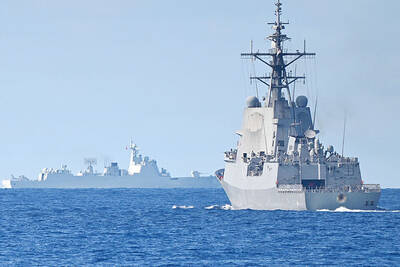
RESPONSE: The transit sends a message that China’s alignment with other countries would not deter the West from defending freedom of navigation, an academic said Canadian frigate the Ville de Quebec and Australian guided-missile destroyer the Brisbane transited the Taiwan Strait yesterday morning, the first time the two nations have conducted a joint freedom of navigation operation. The Canadian and Australian militaries did not immediately respond to requests for comment. The Ministry of National Defense declined to confirm the passage, saying only that Taiwan’s armed forces had deployed surveillance and reconnaissance assets, along with warships and combat aircraft, to safeguard security across the Strait. The two vessels were observed transiting northward along the eastern side of the Taiwan Strait’s median line, with Japan being their most likely destination,
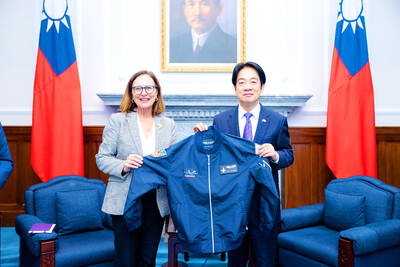
‘NOT ALONE’: A Taiwan Strait war would disrupt global trade routes, and could spark a worldwide crisis, so a powerful US presence is needed as a deterrence, a US senator said US Senator Deb Fischer on Thursday urged her colleagues in the US Congress to deepen Washington’s cooperation with Taiwan and other Indo-Pacific partners to contain the global security threat from China. Fischer and other lawmakers recently returned from an official trip to the Indo-Pacific region, where they toured US military bases in Hawaii and Guam, and visited leaders, including President William Lai (賴清德). The trip underscored the reality that the world is undergoing turmoil, and maintaining a free and open Indo-Pacific region is crucial to the security interests of the US and its partners, she said. Her visit to Taiwan demonstrated ways the
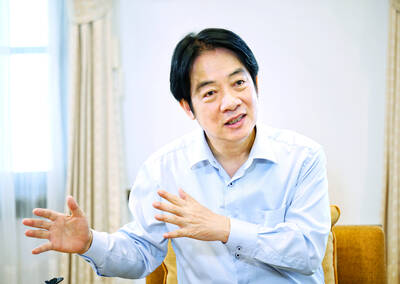
GLOBAL ISSUE: If China annexes Taiwan, ‘it will not stop its expansion there, as it only becomes stronger and has more force to expand further,’ the president said China’s military and diplomatic expansion is not a sole issue for Taiwan, but one that risks world peace, President William Lai (賴清德) said yesterday, adding that Taiwan would stand with the alliance of democratic countries to preserve peace through deterrence. Lai made the remark in an exclusive interview with the Chinese-language Liberty Times (sister paper of the Taipei Times). “China is strategically pushing forward to change the international order,” Lai said, adding that China established the Asia Infrastructure Investment Bank, launched the Belt and Road Initiative, and pushed for yuan internationalization, because it wants to replace the democratic rules-based international
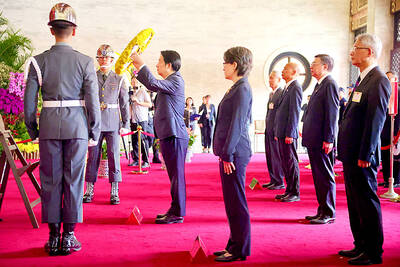
WAR’S END ANNIVERSARY: ‘Taiwan does not believe in commemorating peace by holding guns,’ the president said on social media after attending a morning ceremony Countries should uphold peace, and promote freedom and democracy, President William Lai (賴清德) said yesterday as Taiwan marked 80 years since the end of World War II and the Second Sino-Japanese War. Lai, Vice President Hsiao Bi-khim (蕭美琴) and other top officials in the morning attended a ceremony at the National Revolutionary Martyrs’ Shrine in Taipei’s Zhongshan District (中山) to honor those who sacrificed their lives in major battles. “Taiwanese are peace-loving. Taiwan does not believe in commemorating peace by holding guns,” Lai wrote on Facebook afterward, apparently to highlight the contrast with the military parade in Beijing marking the same anniversary. “We